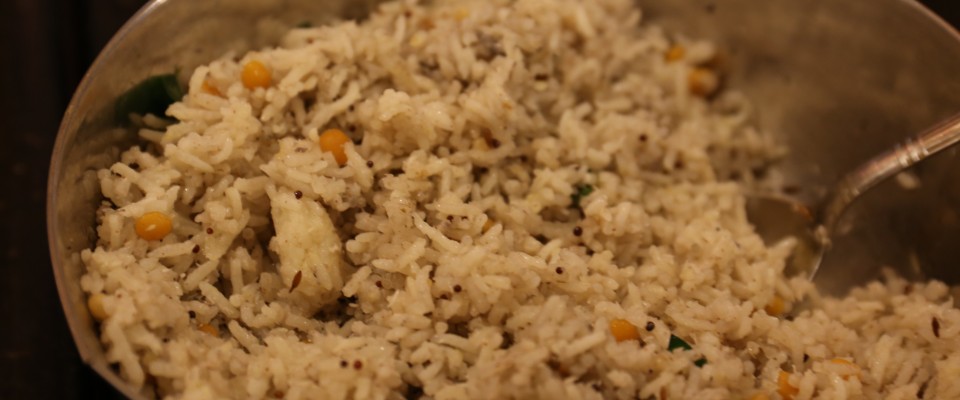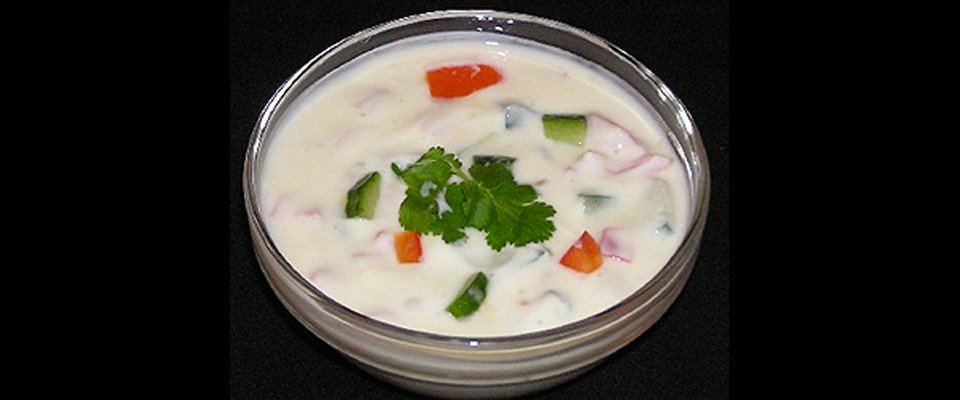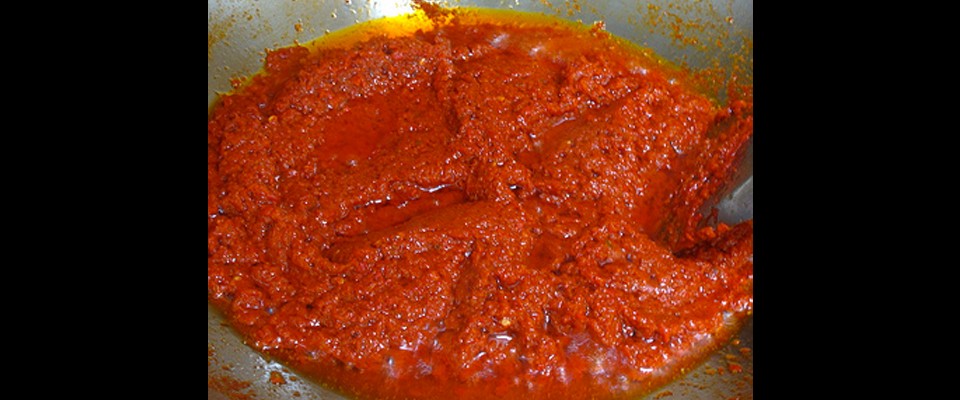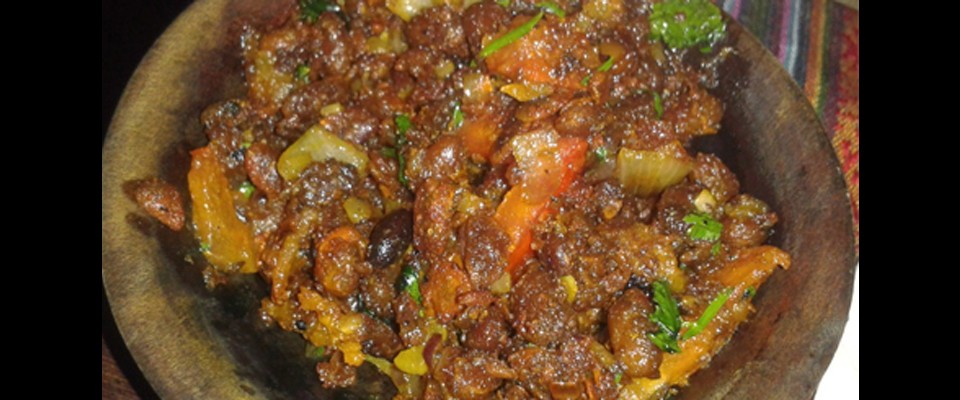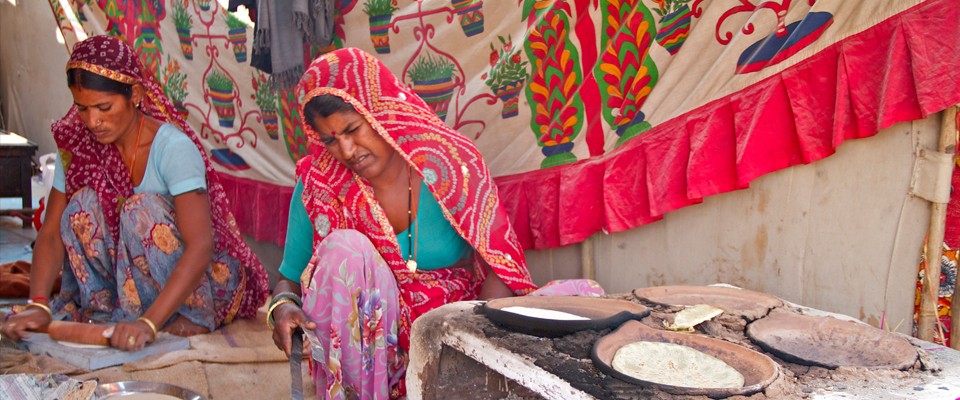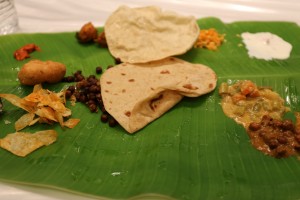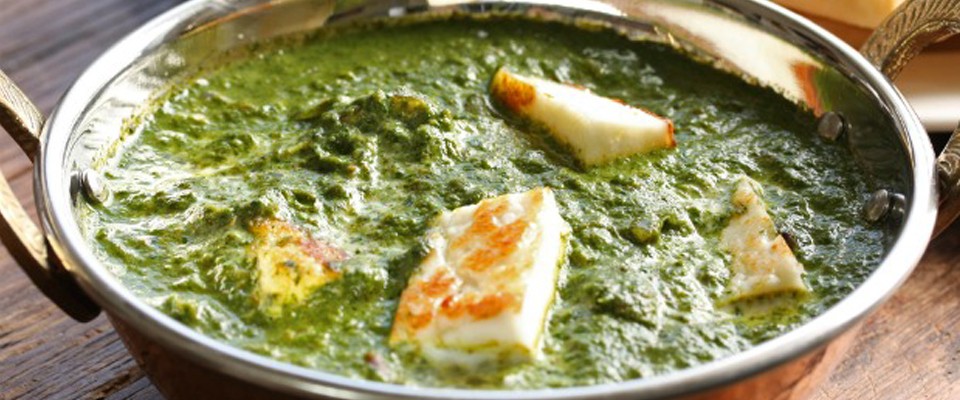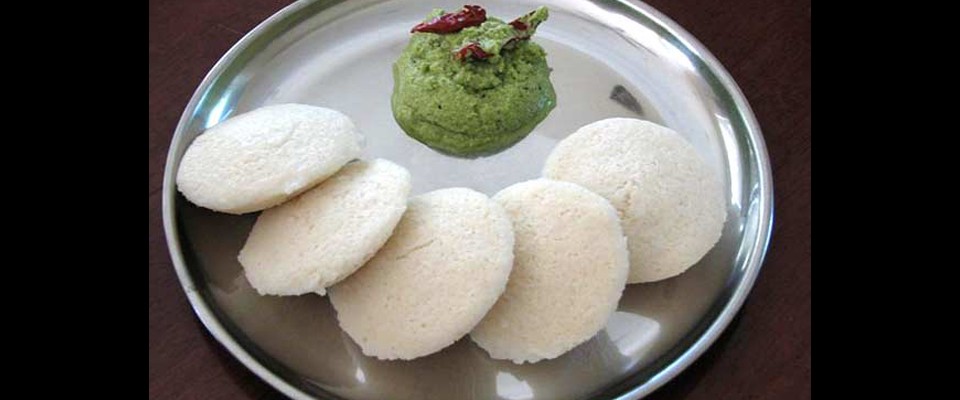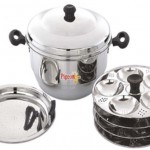Warning: Array to string conversion in
/home/ashtangarc/www/wp-content/plugins/carousel-without-jetpack/carousel/jetpack-carousel.php on line
252
Warning: Array to string conversion in
/home/ashtangarc/www/wp-content/plugins/carousel-without-jetpack/carousel/jetpack-carousel.php on line
252
Warning: Array to string conversion in
/home/ashtangarc/www/wp-content/plugins/carousel-without-jetpack/carousel/jetpack-carousel.php on line
252
Warning: Array to string conversion in
/home/ashtangarc/www/wp-content/plugins/carousel-without-jetpack/carousel/jetpack-carousel.php on line
252
Warning: Array to string conversion in
/home/ashtangarc/www/wp-content/plugins/carousel-without-jetpack/carousel/jetpack-carousel.php on line
252
Warning: Array to string conversion in
/home/ashtangarc/www/wp-content/plugins/carousel-without-jetpack/carousel/jetpack-carousel.php on line
252
Warning: Array to string conversion in
/home/ashtangarc/www/wp-content/plugins/carousel-without-jetpack/carousel/jetpack-carousel.php on line
252
Indian cooking is wonderfully tasty. Annapurna Goddess always inspires it.
- Anna = food
- Purna = complete; abundant; total; full
You will find many restaurants in Mahābalipuram, vegetarian and non-vegetarian and also western-style cooking at the “Nautilus”, run by a Frenchman who has been living in India for a very long time, and at the “Au Yogi” run by a former Indian yoga student, married to a Belgian. There is also “The Blue Elephant” et le well known “Moonrakers”, run by our friend Ramesh, and “The Gecko Café” held by Mani in a nice place with a view on the lake, 14 Othavadai Cross Street. For a kitchen dining room, very cheap: The « Mamalla », S. Mada Street, near the Bus Stand and the « Sri Ananda Bhavan », on the corner of E. Raja Street and Othavadai Street.
-
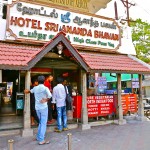
-
Sri Ananda Bhavan
-

-
Blue Elephant Restaurant
If you are invited to eat with an Indian family, you will be greeted with the “Namaskar” (Namaste in the North), the welcome made with both hands together. In India you never wish happiness to someone, it is considered to be in your hands and depends only on you. For a meal you generally bring your host sweets or fruit. You do not say thank you in Indian languages but you can say “Shukrya” (to say thank you in Sanskrit you say “dhanyavaad” or “shukrya” which means “thanks and be prosperious”).
In the large international restaurants, your cutlery will consist of a spoon, fork and knife while in more modest restaurants you are likely to have only a spoon for the semi-liquid dishes. You eat with your fingers of your right hand in India and only with them as those on your left hand are considered impure. In the North you may take the food with your whole hand, but in the South it is considered more polite to use only the end of your fingers. Bread or pancakes are used to help you eat.
In many restaurants in India, the cold chain is not necessarily respected. Fridges or freezers are often turned off to save money, so avoid eating food that has been frozen.
In the temples, saffron powder, blessed water from the Ganges, and sometimes blessed food are offered to visitors as a sign of “Prasad”, blessing of the Gods. It is considered impolite to refuse such gifts.
It’s cuisine
The types of food served in the North differ significantly from those served in the South. Southern cuisine is quite different from the northern culinary habits in that it is much more vegetarian in most of the hotels, with the exception of the international hotel chains. On the other hand, you will more often find fish either grilled or in sauces, in the South.
Southern cooking is generally spicier than that of the North. For those with sensitive palates, you can ask the cook to reduce the spices (“No chilli, please”).
During the meal, our Indian friends drink water or “lassi” which is a diluted dahi (yoghurt), salty or sweet, sometimes with a taste of rose water.
You will often find local beer in the restaurants. Tea and coffee are almost always drunk outside mealtimes in the morning or afternoon, and are served with milk (reminder: alcohol is not sold in the general stores in Tamil Nadu, but only in specialised stores).
-
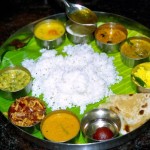
-
The “Thali”
-
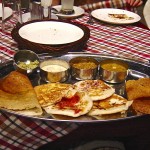
-
Cooking classes : Dosas
-
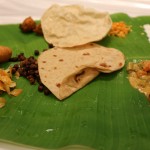
-
Chapati on banana leaf
-
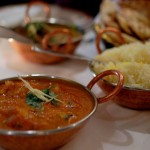
-
Vegetable Curry
-
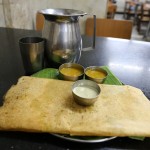
-
Masala dosa
Dishes that you must discover for a heavenly tasting experience …
At breakfast
- Idli(s), a sort of steamed rice ball served with a spicy sauce and coconut chutney.
- Plain dosa, lentil flour pancakes served with a spicy sauce and coconut chutney.
At midday
- Chapatti (ćapātī): kind of unleavened wheat wafer or thin pancake cooked on a “tava” (metal hotplate), which is served with spicy cooked vegetables and coconut chutney.
- Masala Dosa: lentil and rice flour pancake, stuffed with spicy vegetables served with a spicy sauce and coconut chutney.
- Nann or naan: in Indian cooking a kind of large leaf-like flat “bread” cooked on the vertical side of an earthen oven, and made with flour and a little yoghurt as leavening, oil and salt, served with each course. It comes down from the 16th century Muslim tradition in India. It is delicious.
- Parata(paratha): in Indian cooking a kind of “bread” served with the main course or or with the first course. Paratha(s) should be about 3 mm thick. They are made with flour, dal, ghee (clarified butter), salt and a little water. The pastry is flattened with a rolling pin and cooked on a “tava” (metal hotplate) with butter and ghee. They are served with spicy cooked vegetables and coconut chutney. A paratha stuffed with potatoes is called “aloo paratha”.
- “Thali”: in the South of India traditionally served on a banana leaf, the thali is a complete meal where first course, vegetables, dal (lentils) chutney, and dessert is served at the same time, with rice and chapatti or paratha.
Other additional information:
- Travel information: “flights” and “transfers”
- “Visas”
- Finding an “hotel” in Mahābalipuram
- Taking photos in India
- Information on “health” in India
